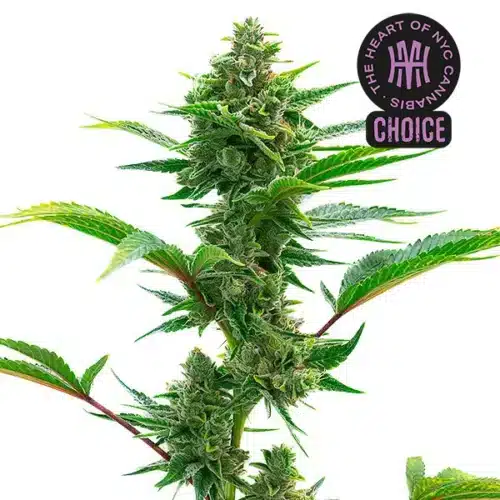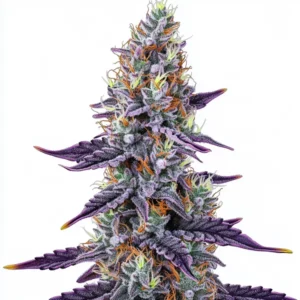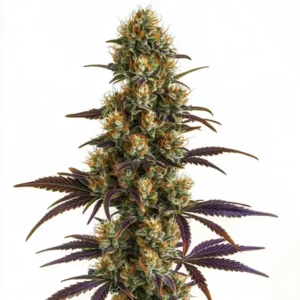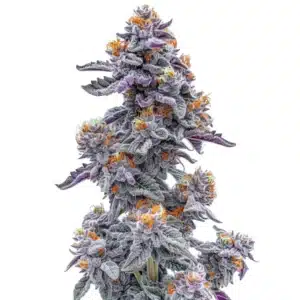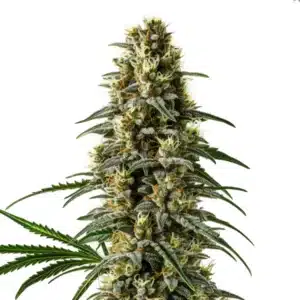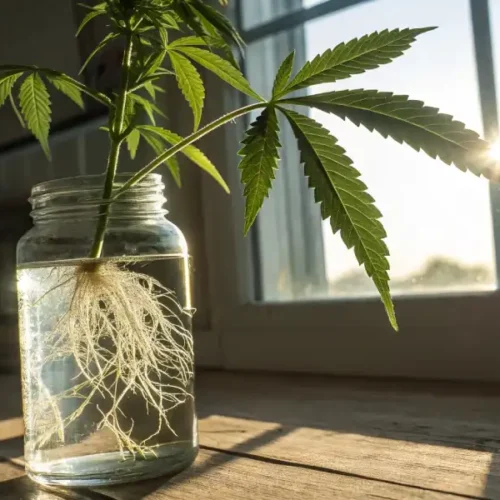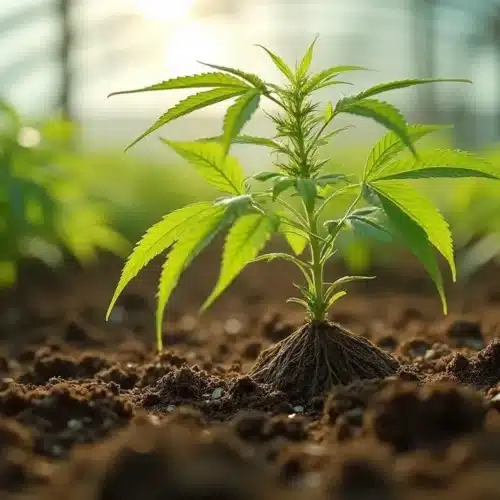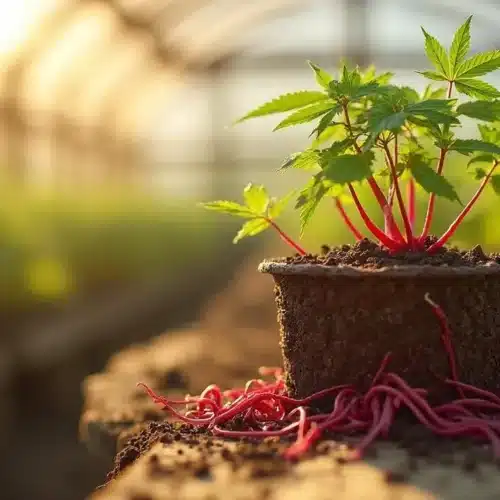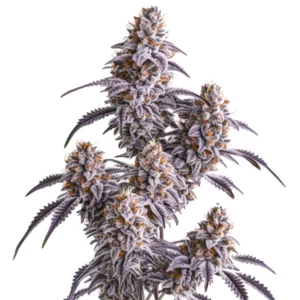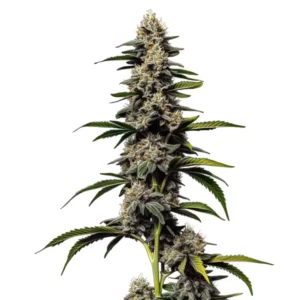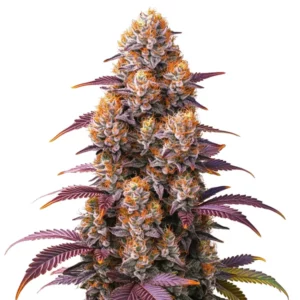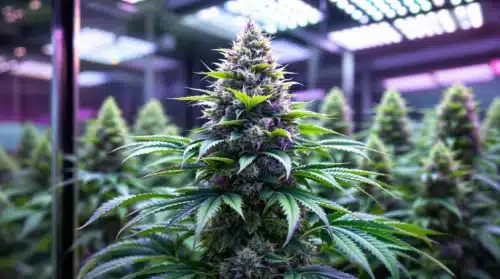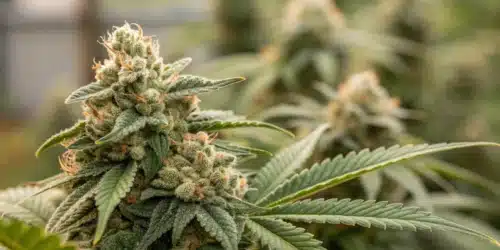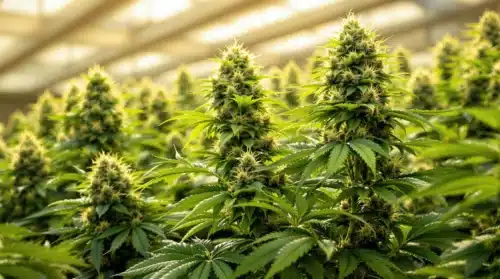The Toad Strain Seeds Description
The Toad Weed Strain is a highly sought-after hybrid known for its potent effects and unique characteristics. This strain is a result of careful breeding, combining genetics from top cannabis strains to create a remarkable hybrid.
Characterized by its vibrant green buds covered in trichomes, the toad strain THC level can reach up to 25%, making it a favorite among experienced cannabis enthusiasts seeking a strong and euphoric high.
Recommended Strains
The Toad
 THC: 27% - 32%
THC: 27% - 32% Type of seed: Feminized
Type of seed: Feminized Phenotype: Mostly Indica
Phenotype: Mostly Indica Day to flower: 8 - 10 weeks
Day to flower: 8 - 10 weeks
The Toad HMC Edition
 THC: 27% - 32%
THC: 27% - 32% Type of seed: Feminized
Type of seed: Feminized Phenotype: Mostly Indica
Phenotype: Mostly Indica Day to flower: 8 - 10 weeks
Day to flower: 8 - 10 weeks
The flavor profile of The Toad Weed Strain is a delightful blend of earthiness, citrus, and pine, making it a truly enjoyable strain to smoke or vape.
Promos & Deals
The Toad Strain Grow Info
Creating the ideal environment for The Toad Weed Strain plants is crucial for their successful growth and development. The environmental requirements of this strain will help you provide the best conditions for a thriving cultivation process.
The Toad Strain thrives in a temperate climate, with temperatures ranging between 70-80°F (21-27°C) during the day and slightly cooler temperatures at night. Maintaining a stable temperature and humidity level within your grow space is essential to prevent stress or potential issues such as mold or mildew.
For indoor cultivation of The Toad weed plants, it’s important to provide adequate lighting. High-quality LED grow lights or HPS lamps are recommended to ensure proper photosynthesis and robust bud development. During the vegetative phase, provide a light cycle of 18-20 hours of light per day, and switch to 12 hours of light and 12 hours of uninterrupted darkness to initiate flowering.
For outdoor cultivation, select a location with ample sunlight and a favorable climate. The Toad Strain thrives in a sunny and warm environment, allowing it to reach its full potential. If you live in a region with cooler climates, consider using a greenhouse or providing additional protection to extend the growing season and safeguard your plants from adverse weather conditions.
Setting Up Your Cannabis Growing Space
Before you start growing The Toad, it is essential to set up an efficient and well-organized growing space, whether you choose indoor or outdoor cultivation. Consider the following factors:
Indoor Cannabis Cultivation
For indoor growers, selecting the right grow tent or dedicated grow room is crucial. Ensure that the space provides sufficient room for the plants to grow vertically and has proper ventilation to maintain a fresh airflow. Install an efficient exhaust system with a carbon filter to control odors and prevent the accumulation of heat or humidity. Use reflective materials or Mylar sheets to maximize light distribution and avoid light leaks that could disrupt the flowering phase.
Choose a suitable growing medium for The Toad, such as high-quality soil or a hydroponic system, depending on your preferences and experience. Ensure proper drainage to prevent waterlogging and maintain a balanced pH level of around 6.0-6.5 for optimal nutrient absorption.
Outdoor Cannabis Cultivation
When cultivating The Toad outdoors, select a location with plenty of sunlight and suitable soil conditions. Ensure the soil is well-draining and rich in organic matter. Consider using large containers or fabric pots to have better control over soil quality and root health. Additionally, protect your plants from strong winds by placing them near a fence or using windbreaks.
Using stakes or trellises to support the branches of this Strain plants is recommended. This helps prevent the branches from bending or breaking under the weight of the dense buds and promotes better airflow.
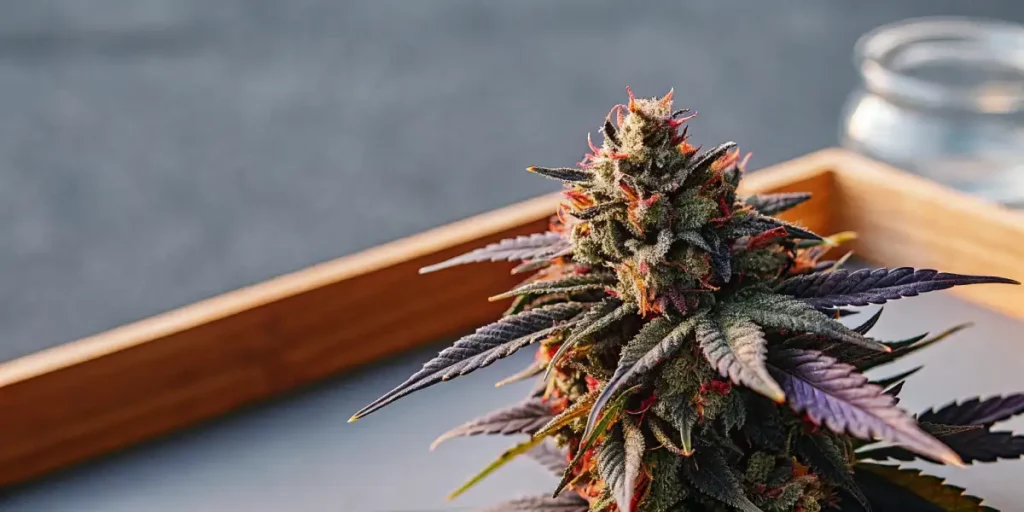
Propagation and Germination of The Toad Strain Seeds
Successful germination and propagation are essential for healthy and vigorous Strain plants. Follow these steps to ensure a high germination rate and successful propagation:
1. Start by selecting high-quality Toad Weed seeds from a reputable seed bank, like Blimburn Seeds. This ensures genetic stability and the feminization of your plants.
2. Begin the germination process by soaking the seeds in distilled water or a damp paper towel for 24-48 hours. Maintain a temperature between 70-85°F (21-29°C) and provide a dark and undisturbed environment.
3. After the seeds have soaked and developed taproots, transfer them carefully to a pre-moistened growing medium, such as a seedling tray or small pots filled with a light and well-draining soil mix.
4. Place the seeds in a warm and humid environment with gentle airflow. Maintain a temperature around 75-80°F (24-27°C) and a humidity level of 60-70% for optimal germination.
5. Provide indirect light to the seedlings during the first few days, gradually increasing the light intensity as they develop. Avoid exposing them to intense light or heat that could cause stress or damage.
6. Once the seedlings have developed a few sets of true leaves, they are ready to be transplanted into larger pots or the final growing containers.
By following these germination and propagation steps, you can ensure a successful start for The Toad plants and establish a strong foundation for healthy growth and abundant yields.
Vegetative Phase of Toad Weed Cannabis
The vegetative phase is a crucial stage in the development of your Toad Weed Strain plants. Here are some key considerations during this phase:
Lighting: Provide The Toad plants with 18-20 hours of light per day to promote vigorous vegetative growth. High-quality LED grow lights or HPS lamps are recommended to ensure sufficient light intensity and spectral distribution.
Nutrition: During the vegetative phase, The Toad plants require a balanced and nutrient-rich diet. Use a reputable cannabis fertilizer with a higher nitrogen (N) content to encourage healthy leaf and stem growth. Follow the manufacturer’s instructions and monitor the plants for any signs of nutrient deficiencies or excesses.
Watering: Water your plants when the top inch of the soil feels dry. Avoid overwatering, as it can lead to root rot and other moisture-related issues. Allow the soil to dry out slightly between watering sessions, but ensure the plants do not experience extreme drought.
Training: Consider employing training techniques such as low-stress training (LST) or topping to control the height and shape of The Toad plants. These methods help create an even canopy, increase light penetration, and promote better bud development.
Pruning: Remove any lower branches or leaves that receive little light or show signs of disease or pests. This helps improve airflow and reduces the risk of mold or mildew formation.
By providing The Toad plants with the right environmental conditions, nutrition, and care during the vegetative phase, you can establish healthy and robust plants ready for the flowering stage.
Flowering Phase of The Toad Marijuana
The flowering phase is the most anticipated stage of growing The Toad, as it is when the plants develop their characteristic buds. Here’s what you need to know:
Lighting: Adjust the light cycle to 12 hours of light and 12 hours of uninterrupted darkness to initiate the flowering phase. Use a timer to maintain a consistent light schedule. During this stage, The Toad plants require intense light, so ensure your grow lights provide adequate coverage and maintain the appropriate distance from the canopy.
Nutrition: Transition from a nutrient formula higher in nitrogen to a bloom or flowering-specific nutrient formula. These formulations are generally higher in phosphorus (P) and potassium (K), which promote bud development and overall flowering performance. Monitor the plants closely and adjust nutrient levels as needed to avoid deficiencies or toxicities.
Temperature and Humidity: Maintain a slightly lower temperature during the flowering phase, ideally around 65-75°F (18-24°C), to encourage resin production and prevent heat-related stress. As for humidity, aim for levels around 40-50% to minimize the risk of mold or bud rot.
Support: As your Toad Weed Strain plants enter the flowering phase, the weight of the developing buds may cause branches to bend or break. Provide adequate support using stakes or trellises to ensure the plants can bear the weight and avoid bud damage.
Flowering Time: The Toad strain typically has a flowering time of 8-10 weeks, but this can vary depending on the specific phenotype and environmental conditions. Monitor the trichome development using a magnifying tool to determine the optimal harvest window.
Throughout the flowering phase, maintain a vigilant eye for any signs of pests or diseases. Implement proper pest management practices and take immediate action at the first sight of infestation or abnormalities.
Cannabis Fertilization and Nutrition – The Toad Weed Strain
Proper nutrition and fertilization are crucial for maximizing the growth, yield, and overall health of this Weed Strain plants. Consider the following tips:
Choosing the Right Fertilizer: Select a high-quality cannabis-specific fertilizer or nutrient line that provides a balanced blend of macro and micronutrients. Look for products rich in nitrogen (N), phosphorus (P), and potassium (K) to support healthy growth, root development, and bud formation.
Feeding Schedule: Follow the manufacturer’s instructions and adjust the feeding schedule based on your plants’ specific needs. Start with a lower concentration and gradually increase it as the plants progress through their growth stages. Monitor the plants closely for any signs of nutrient deficiencies or excesses, and make adjustments accordingly.
Supplements and Additives: Consider incorporating supplements and additives into your feeding regimen to enhance specific aspects of plant development. These may include bloom boosters, beneficial microbes, enzymes, or organic amendments that improve soil structure and nutrient availability.
Regularly monitor your plants’ response to the feeding program, adjusting nutrient concentrations and frequencies as needed. Remember to flush the plants with pure water during the final weeks of the flowering phase to remove any excess salts or nutrients, which can affect the flavor and overall quality of the final harvest.
Pest and Disease Control for Growing Toad Weed
While The Toad is known for its resilience, it is still susceptible to pests and diseases. Implementing proper pest and disease control measures is crucial to protect your plants and ensure a successful cultivation. Here are some preventive and corrective actions:
Prevention:
- Regularly inspect your plants for any signs of pests, such as spider mites, aphids, or thrips. Early detection is key to preventing a full-blown infestation.
- Maintain a clean and tidy growing space, removing any dead plant material or debris that could harbor pests or pathogens.
- Introduce beneficial insects, such as ladybugs or predatory mites, to your garden to help control pests naturally.
- Ensure proper airflow and ventilation in the growing space to reduce the risk of mold or mildew formation.
- Quarantine new plants or clones before introducing them into your growing area to prevent the spread of pests or diseases.
Corrective Actions:
- If you detect pests, use organic or low-toxicity pest control products specifically formulated for cannabis. Follow the instructions carefully and avoid using harsh chemicals that can compromise the quality of your harvest.
- For common fungal diseases like powdery mildew or botrytis, remove infected plant material, increase airflow, and consider using organic fungicides or natural remedies such as neem oil or a milk spray solution.
- When dealing with severe infestations or persistent diseases, consult with a professional grower or horticulturist for tailored advice and appropriate solutions.
Harvesting and Curing Your Toad Weed Crop
The timing of your harvest and the curing process significantly impact the quality and potency of your Toad buds. Follow these steps to ensure a successful harvest and curing process:
Harvest Timing: To determine the ideal harvest time, closely monitor the trichomes on your Toad Weed Strain buds using a magnifying tool. Harvest when a significant portion of the trichomes have turned milky white and some have become amber. This indicates the peak THC levels and desired cannabinoid profile.
Harvesting Technique: Use clean, sharp scissors or pruning shears to carefully trim the branches with mature buds. Handle the buds gently to avoid damaging the trichomes or resin glands.
Trimming: After harvesting, trim away excess fan leaves and sugar leaves from the buds. While some growers prefer a “wet trim” immediately after harvest, others opt for a “dry trim” after the buds have dried. The choice of trimming method is a matter of personal preference.
Curing: Curing is the process of drying and aging The Toad Weed Strain buds to enhance their flavor, aroma, and overall quality. Place the trimmed buds in glass jars with airtight seals. Keep the jars in a cool, dark, and dry place with a stable temperature of around 60-70°F (15-21°C) and a humidity level of 60-65%. Burp the jars daily for the first week to release excess moisture and prevent mold growth. After the initial curing phase, burp the jars less frequently, gradually extending the intervals to every few days or weekly over several weeks.
Curing Duration: Curing typically lasts for a minimum of two weeks to a few months, with longer curing periods resulting in smoother and more flavorful buds. The curing process allows for the breakdown of chlorophyll and the development of complex terpene profiles.
Properly cured Toad Weed Strain buds will have a rich aroma, smooth smoke, and a well-rounded flavor profile. Be patient during this phase, as it significantly enhances the overall smoking or vaping experience.
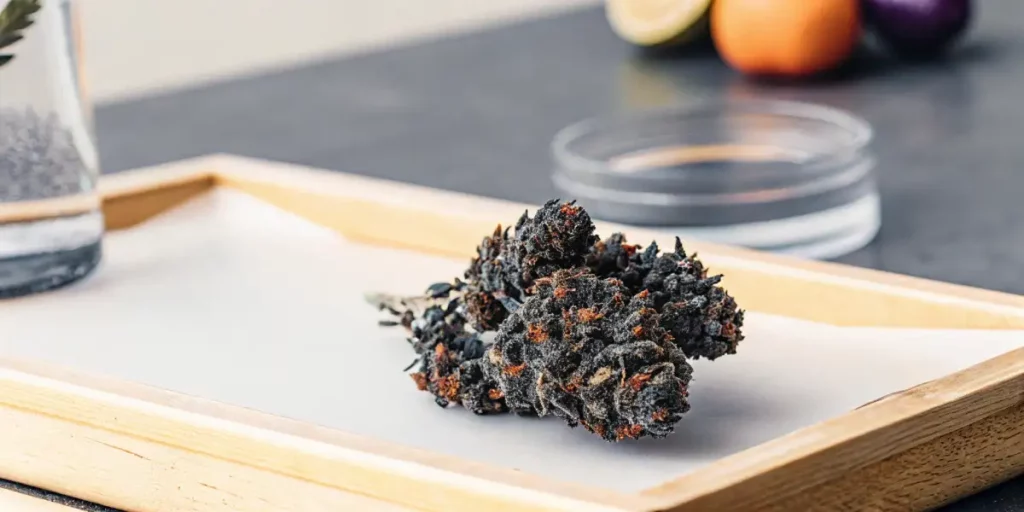
Is The Toad an Indica or Sativa Strain?
The Toad Strain is a hybrid cannabis strain, which means it has both indica and sativa genetics in its lineage. The exact balance of indica and sativa characteristics can vary depending on the specific phenotype of the strain and the breeding practices of the cultivator.
Indica-dominant phenotypes of The Toad are likely to exhibit traits such as relaxation, body high, and a sense of calm. Sativa-dominant phenotypes, on the other hand, may provide a more energetic and cerebral high, often accompanied by increased creativity and sociability.
The choice between an indica-dominant or sativa-dominant phenotype of The Toad Strain depends on your personal preferences and the effects you seek. Some users prefer indica-dominant strains for relaxation and nighttime use, while others prefer sativa-dominant strains for daytime activities and creativity.
Keep in mind that individual experiences can vary, and the effects of cannabis can be influenced by factors such as dosage, tolerance, and the presence of other cannabinoids and terpenes.
Advantages of Growing The Toad Cannabis Seeds
Growing The Toad Weed Strain cannabis seeds offers several advantages for both novice and experienced cultivators:
- Potent Effects: The Toad is known for its high THC content, which can provide a strong and euphoric high for those seeking intense effects.
- Unique Flavor Profile: The Toad strain’s blend of earthy, citrus, and pine flavors offers a delightful and memorable smoking or vaping experience.
- Hybrid Versatility: As a hybrid strain, The Toad Weed combines the best of both indica and sativa genetics, offering a balanced and versatile experience.
- Resilience: This Weed Strain is known for its robust and resilient growth, making it suitable for both indoor and outdoor cultivation.
- High-Yield Potential: With proper care and cultivation techniques, The Toad Weed can produce generous yields of potent buds.
Disadvantages of Growing The Toad Weed Seeds
While This Strain has many advantages, it’s important to be aware of potential disadvantages and challenges associated with its cultivation:
- High THC Content: The potent effects of The Toad Weed Strain may be overwhelming for inexperienced users or those with low THC tolerance.
- Odor Control: Toad Weed Strain can have a strong and distinctive odor during flowering, requiring effective odor control measures for discreet cultivation.
- Legal Restrictions: Cannabis cultivation may be subject to legal restrictions in some regions, so it’s essential to research and comply with local laws and regulations.
- Investment: Setting up an indoor cultivation space with quality equipment can require a significant initial investment.
- Learning Curve: Cultivating The Toad Weed successfully may require knowledge and experience in cannabis horticulture, which can have a learning curve for beginners.
Despite these potential challenges, many growers find the rewards of growing The Toad Seeds well worth the effort and investment.
Why Buy The Toad Seeds
When considering whether to buy Toad Strain marijuana seeds, there are several reasons why it can be a favorable choice:
- Genetic Quality: Purchasing seeds from reputable seed banks ensures the genetic stability and authenticity of your Toad Strain plants.
- Feminized Seeds: Many seed banks offer feminized Toad Weed Strain seeds, eliminating the need to worry about male plants and seed production.
- Strain Selection: Seed banks often provide a wide selection of strains, allowing you to choose the specific phenotypes and characteristics that suit your preferences.
- Privacy and Convenience: Buying seeds online provides privacy and convenience, as they can be discreetly delivered to your doorstep.
- Customer Support: Reputable seed banks offer customer support and guidance, ensuring you have the resources you need for a successful grow.
When purchasing The Toad Weed Strain seeds, research and choose a trusted and established seed bank to ensure the quality and authenticity of the seeds you receive.
Common Challenges in Toad Weed Strain Cultivation
While this Strain cultivation can be highly rewarding, it’s essential to be aware of potential challenges and how to address them:
- Nutrient Management: Proper nutrient management is crucial to prevent nutrient deficiencies or excesses. Use a balanced fertilizer designed for cannabis, monitor pH levels, and adjust nutrient concentrations as needed.
- Pest and Disease Control: Even resilient strains like Toad Weed can be susceptible to pests and diseases. Regularly inspect your plants for signs of pests like spider mites or aphids, and implement preventive measures to protect your crop.
- Odor Control: The Toad Weed Strain can produce a pungent aroma during flowering. Invest in odor control solutions such as carbon filters or exhaust fans to minimize the scent and maintain discretion.
- Environmental Factors: Maintaining consistent environmental conditions, including temperature, humidity, and airflow, is vital to prevent stress-related issues and promote healthy growth.
- Training and Pruning: To optimize yields and bud development, consider training techniques like topping, low-stress training (LST), or defoliation. Proper pruning can also improve airflow and reduce the risk of mold.
By addressing these common challenges proactively and staying vigilant throughout the cultivation process, you can increase the likelihood of a successful Toad Weed Strain harvest.
Growing Toad Weed Strain cannabis seeds can be a rewarding experience for cultivators of all levels. This hybrid strain offers potent effects, a unique flavor profile, and versatility that appeals to both recreational and medicinal users.
By following the guidelines and recommendations outlined in this cultivation guide, you can create the ideal environment, manage nutrient levels, address potential challenges, and ultimately enjoy a bountiful harvest of high-quality Toad Weed Strain buds.
Remember that patience and attention to detail are key to successful cultivation. With dedication and a passion for producing top-quality cannabis, you can achieve outstanding results with Toad Weed Strain.
If you’re considering growing Toad Weed Strain, start by sourcing high-quality seeds from a reputable seed bank, and embark on your journey as a cannabis cultivator.
FAQS
What is The Toad Weed Strain and what are its effects?
The Toad Weed Strain is a hybrid cannabis variety known for its potent THC content, which can reach up to 25%. This strain delivers a euphoric, uplifting high, making it a favorite among experienced users. It features a blend of earthy, citrus, and pine flavors, making it an enjoyable choice for both smoking and vaping.
How long does The Toad Strain take to flower?
The Toad Strain typically has a flowering time of 8-10 weeks. The exact duration may vary depending on the specific phenotype and growing conditions. To ensure optimal timing, regularly check the trichome development with a magnifying tool, which will help determine the best harvest window.
What are the ideal growing conditions for The Toad Weed Strain?
The Toad Strain thrives in a temperate climate with daytime temperatures between 70-80°F (21-27°C) and slightly cooler nighttime temperatures. For indoor cultivation, high-quality LED or HPS lights are recommended, while outdoor growers should ensure plenty of sunlight and consider using greenhouses in cooler climates.
What are the common challenges when growing The Toad Weed Strain?
While The Toad Strain is resilient, common challenges include nutrient management, pest control, and odor regulation. It’s important to monitor nutrient levels carefully, use organic pest control methods, and invest in odor control solutions like carbon filters to maintain discretion during the flowering phase.
Why should I buy The Toad Weed Strain seeds from a reputable seed bank?
Purchasing The Toad Weed Strain seeds from a reputable seed bank ensures genetic stability, feminization, and overall quality. Trusted seed banks offer expert customer support and secure delivery, helping you get started on the right foot with your cannabis cultivation journey.


